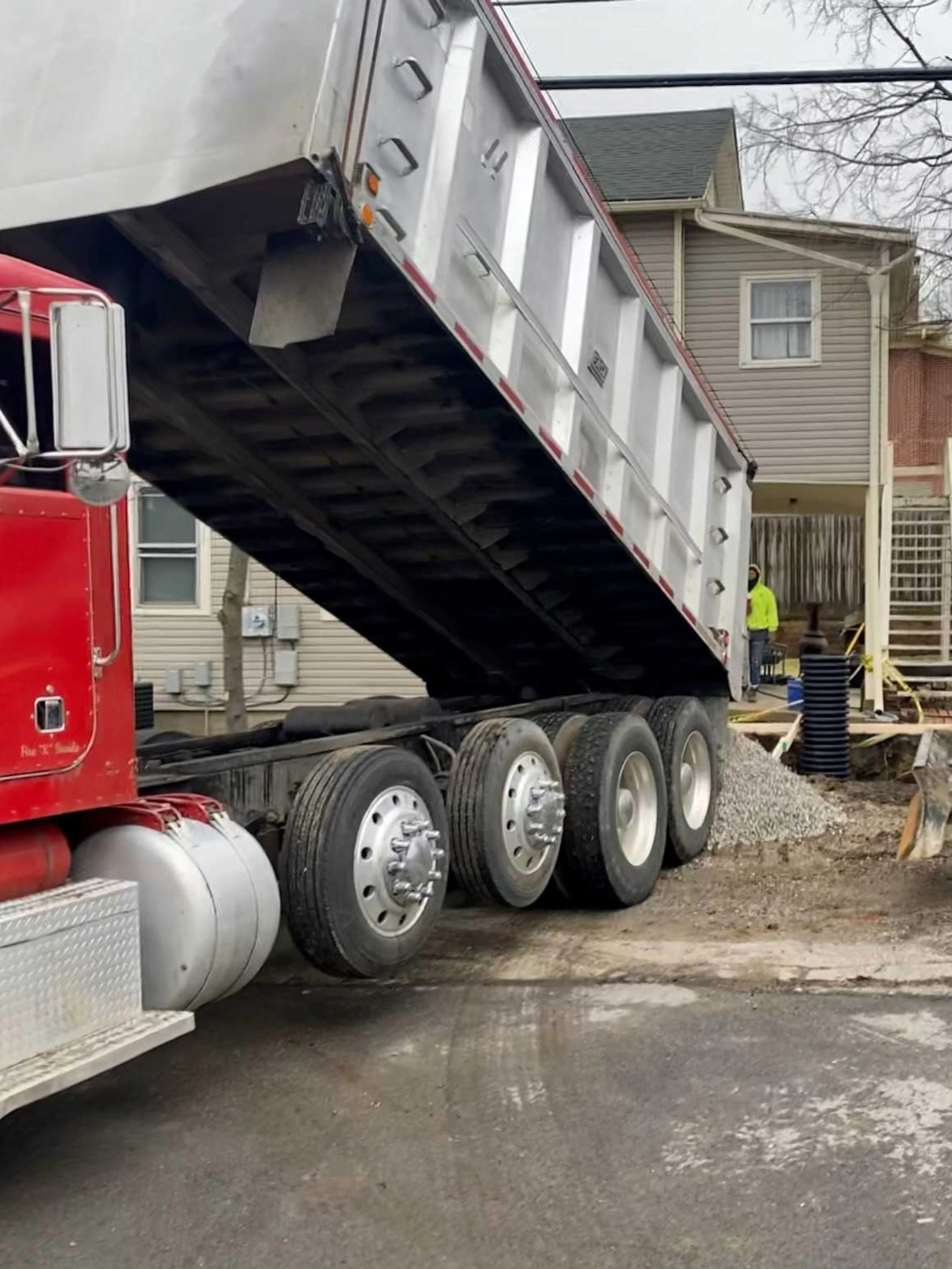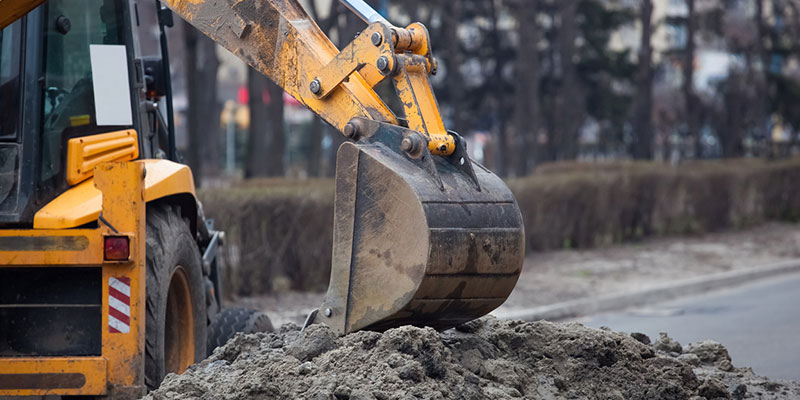Excavating Ohio - Top Excavation Professionals for Ohio Projects
Excavating Ohio - Top Excavation Professionals for Ohio Projects
Blog Article
Introducing the Art of Excavation: Pro Tips for Safe and Efficient Digging
In the world of excavation, the proficiency of efficient and secure digging is an art kind that needs adherence, understanding, and accuracy to well established methods. As soil is transformed and planet is moved, the complexities of excavation disclose themselves, requiring an eager understanding of devices, dirt composition, safety and security procedures, and ecological considerations. The knowledge needed to browse these aspects successfully can imply the distinction in between a successful excavation task and a potential catastrophe. By unwinding the layers of this detailed process, a globe of understandings and methods awaits those looking for to raise their excavation abilities to brand-new elevations.
Relevance of Appropriate Devices
To ensure the safety and effectiveness of any kind of excavation project, using the suitable devices is extremely important. Excavation projects vary in extent and intricacy, ranging from little property landscape design jobs to large-scale building endeavors.
These functional equipments come in different sizes to suit different task requirements. Small excavators are suitable for smaller jobs, while larger excavators deal with extra comprehensive tasks successfully.
Aside from excavators, various other essential tools consists of dump bulldozers, vehicles, and trenchers. Unload trucks are essential for removing and transferring excavated products, while trenchers are used for digging slim and deep trenches. Bulldozers master tasks that call for pressing big amounts of dirt or particles. By investing in the appropriate tools, excavation projects can be completed safely, in a timely manner, and with precision.
Recognizing Soil Structure
A detailed understanding of soil structure is basic for carrying out excavation projects with precision and safety. Comprehending the various sorts of dirt is essential as it straight affects excavation techniques, devices selection, and total project efficiency. Soil structure typically is composed of four main components: sand, silt, clay, and organic matter. Each element has special homes that influence just how dirt reacts to excavation processes.
Silt bits are smaller sized than sand but larger than clay, providing moderate drain and cohesion. Organic matter, such as decomposing plant product, affects dirt fertility and security.
Before beginning excavation, carrying out soil examinations to identify its structure and features is necessary. This info aids in selecting the suitable equipment, implementing precaution, and establishing excavation techniques customized to the details soil conditions - lancaster trenching. By understanding soil structure, excavation professionals can improve task results while making sure safety and adherence to ideal methods
Safety And Security Steps and Procedures
Understanding dirt composition is the keystone whereupon security actions and protocols for excavation projects are developed, making certain the well-being of workers and the success of the endeavor. When it involves safety and security during excavation, there are several vital measures that need to be applied to mitigate threats and stop mishaps.
First and foremost, prior to any type of excavating starts, a detailed inspection of the website should be conducted to recognize any kind of possible hazards such as underground utilities, unsteady soil conditions, or neighboring frameworks that can posture a risk. It is crucial to have a proficient person oversee the excavation procedure to ensure that all safety protocols are adhered to purely.
Additionally, all workers entailed in the excavation has to be effectively trained in safe excavating practices and the correct operation of tools. By sticking to these security steps and protocols, excavation projects can be finished effectively and without occurrence.
Effective Excavation Preparation
When starting an excavation project, thorough planning is necessary to make certain performance, safety, and effective results. Reliable excavation planning includes numerous essential steps that are important for the smooth execution of the project. The initial step is to conduct a detailed site evaluation to determine any kind of prospective hazards, such as underground utilities or unsteady soil conditions. This details is crucial for establishing an in-depth excavation plan that includes additional resources security procedures and run the risk of mitigation approaches.
As soon as the website evaluation is total, the following action is to produce a clear timeline and routine for the excavation tasks. This consists of establishing the sequence of tasks, devices demands, and manpower allocation. Correct scheduling aids stay clear of delays and ensures that the project that site remains on track.

In addition, communication amongst all employee is extremely important throughout the preparation stage. Clear instructions, regular updates, and efficient sychronisation are necessary for an effective excavation task. By spending effort and time in meticulous planning, excavation groups can significantly improve performance, minimize threats, and accomplish successful outcomes.

Handling Ecological Factors To Consider
With enhancing emphasis on ecological sustainability in building techniques, taking care of ecological factors to consider has become an important facet of excavation jobs. Excavation tasks have the prospective to influence the surrounding setting with dirt erosion, debris runoff, habitat disruption, and contamination of water resources. To reduce these risks, it is vital to execute best methods that focus on ecological defense.

Moreover, proper waste monitoring is important to stop dirt and water contamination. Implementing procedures for the disposal of harmful products, recycling of waste products, and lessening using damaging chemicals can dramatically reduce the ecological influence of excavation tasks. By integrating these techniques into excavation planning and implementation, construction firms can make certain that their projects are not only risk-free and effective yet also ecologically liable.
Conclusion
To conclude, understanding the art of excavation calls for a comprehensive understanding of proper devices, dirt structure, safety and security procedures, and efficient preparation. By following these standards and taking into consideration environmental elements, excavations can be carried out safely and successfully. It is essential to focus on security and productivity in every digging task to ensure effective end results.
As soil is transformed and planet is moved, the intricacies of excavation reveal themselves, requiring a keen understanding of tools, soil structure, safety and security methods, and ecological factors to consider.To guarantee the security and performance of any excavation find out here now task, using the appropriate devices is extremely important.A comprehensive understanding of soil make-up is fundamental for performing excavation projects with precision and security. Comprehending the various kinds of soil is critical as it directly impacts excavation methods, devices choice, and overall task performance. By comprehending dirt make-up, excavation professionals can enhance task end results while making certain safety and adherence to best practices.
Report this page